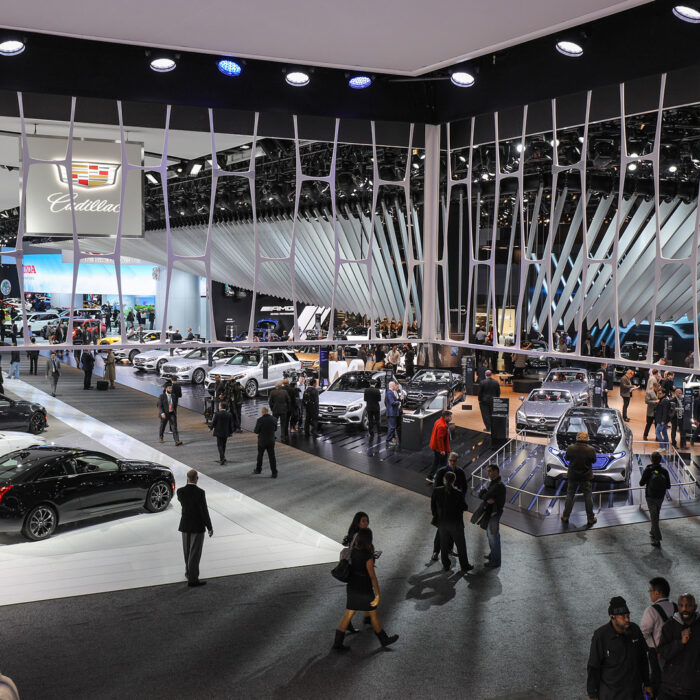It seems I’m currently reassessing my view on the design of the new BMW 7 Series. My initial denial faded within the first thirty minutes, and a day filled with driving frustration followed. Now, after repeatedly watching brand videos, breakdowns, and comments from automotive designers, I still hesitate to deem the style stunning, though I’ve come to accept it. Nevertheless, the G70 sedan surprises in ways that go beyond mere aesthetics.
When widespread criticism surrounds something, it spurs me to explore deeper and form my own opinion. This was precisely my experience with the new 7 Series’ design, which hasn’t been widely embraced. Yet, we now accept the BMW M4 with its prominent nostrils, and the once-criticized E60 5 Series is nearing classic status. Perhaps this sedan also deserves some time. This approach has proven effective in every case, except with the 7 Series E65 generation. I’ll preemptively add the iX and XM crossovers to this list—we might not live long enough to see these models revered for their beauty.
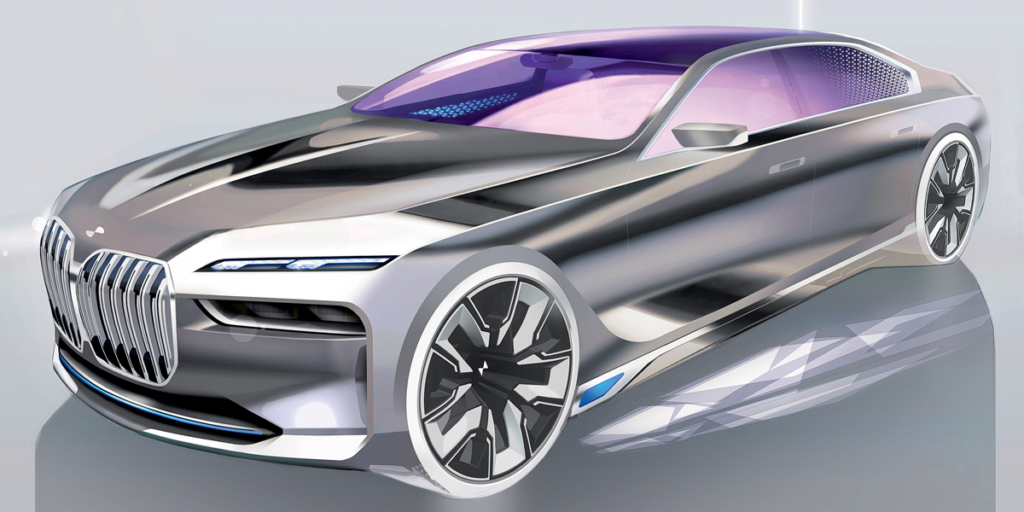
The design of the G70 sedan was not only the work of Domagoj Dukec and Sebastian Simm, but also Josef Kaban, who was at BMW from 2017 to 2019. As usual, the designers’ initial vision was slightly different: in the sketches, the future “7 series” has a more dynamic silhouette with a very short front overhang and a compact trunk. However, the face with the two-tiered optics was in the project from the very beginning—now it is a distinctive feature of all senior BMWs, including the X7 and XM.
The first and most striking impression is its size. The new 7 Series feels big, not so much in length—as there are no short-wheelbase versions anymore—but in height. Standing next to it evokes a feeling similar to being beside an Aurus, where the window line also reaches a crossover-like height. Comparing it to the previous 7 Series, I noticed the windows now start 8 cm higher. This change largely results from BMW’s strategic decision to use a unified platform for both hydrocarbon and electric models, unlike Mercedes, which prefers to differentiate its battery-powered vehicles.
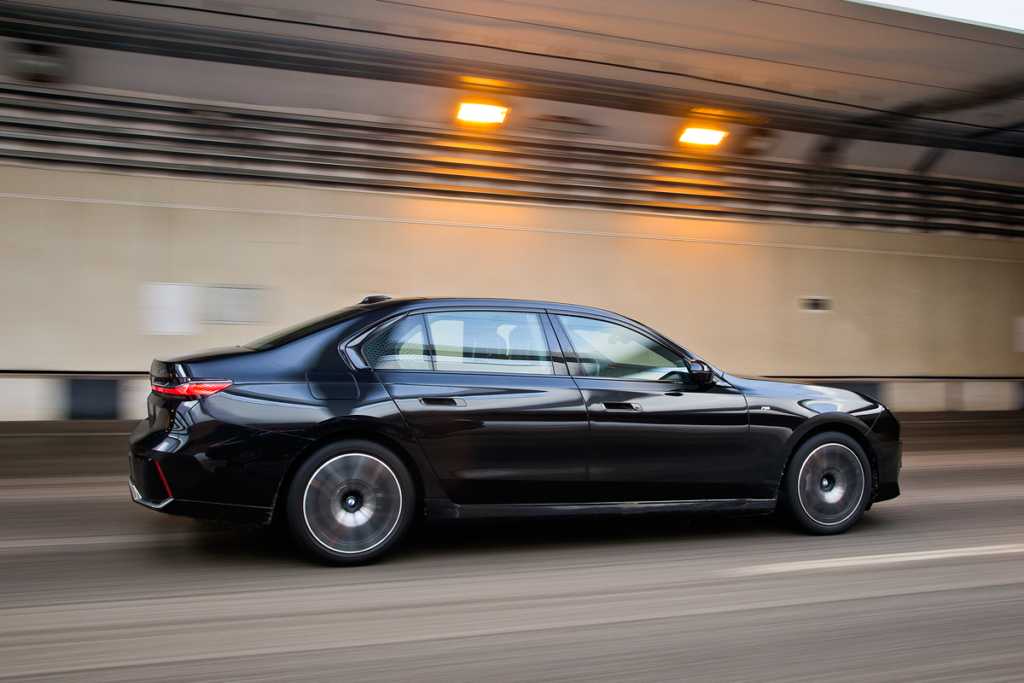
The 7 Series has never before offered such a diverse range of powertrains: from mild hybrids and plug-in hybrids to traditional diesel and pure electric drives. The electric BMW i7 sedan, capable of up to 660 horsepower, is undoubtedly a draw for many. However, I was fortunate to test drive the only available diesel model provided by the dealership—the BMW 740d xDrive. This model features a three-liter turbo-diesel B57 engine delivering 286 horsepower, which, when combined with a 48-volt starter-generator, produces a total of 299 horsepower and 670 Newton-meters of torque. This remains the sole diesel variant in the new lineup.
The BMW 740d eschews flashy options: no Swarovski crystal headlights, no door servos, and certainly no massive 31-inch “television” for rear passengers. But that’s no issue—our test time is confined to daylight. Every “electro-Chinese” car nowadays can fling doors senselessly, and a ceiling-mounted “television”… How long until you feel nauseous watching a giant screen on the move? Let’s set aside the bells and whistles and focus on what truly matters.
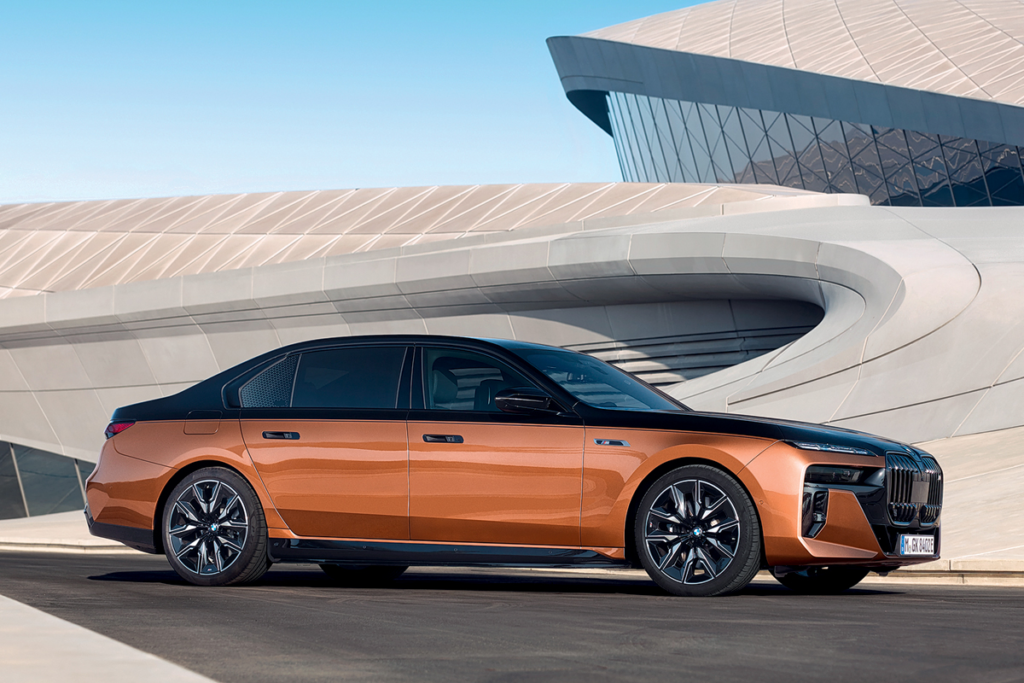
Besides the diesel version 740d xDrive, the G70 family includes many other variants. The purely gasoline BMW 735i (3.0 L, 286 hp), 740i (3.0 L, 380 hp), and 760i xDrive (4.4 L, 544 hp) are produced only for export—mainly for America and China. Europe is allotted the plug-in hybrids BMW 750e xDrive (489 hp) and M760e xDrive (571 hp), which have a three-liter gasoline “six” working in tandem with an electric motor. There are also three electric BMW i7s (first slide), which externally are almost indistinguishable from the fuel “7 series”: the eDrive50 version (455 hp) has a single motor on the rear axle, while the xDrive60 (544 hp) and M70 xDrive (660 hp) versions feature dual-motor all-wheel drive. All are equipped with a traction battery with a capacity of 101.7 kWh, located under the floor of the cabin (slide below).

A notable change in the new “7 Series” is the absence of external door handles. I appreciate the discreet pockets that conceal the electric lock button. In an era where protruding handles are a design faux pas, this solution is preferable to retractable mechanisms, and fortunately, nothing here is prone to freezing. My concerns that these pockets would gather road dirt were unfounded—thanks to meticulously engineered aerodynamics. And although you can no longer enjoy the tactile feel of spring-loaded handles or observe their kinematics, such details are for those of us who relish classic car interactions. Simply press the button, hear the motor whir, and you’re welcomed inside.

The optional fold-down 31-inch “television” is perhaps only needed for pretty shots in the press release. Its practical significance is questionable.
The interior of the G70, compared to the previous “7 Series” G11—also displayed at the dealership—lacks the signature BMW scent. Instead of the usual leather richness, the G70 offers a distinctly technological aroma, and the upholstery has a more rubber-like feel. This is due to Veganza, a synthetic leather similar to the Sensatec material found in Kaliningrad’s “package” sedans and crossovers. Of course, genuine leather and even cashmere inserts are still available options. The rear seat of the “740” is notably basic, devoid of adjustments. Interestingly, unlike previous “7 Series” models which featured elevated seating, the new setup is closer to Mercedes’ design, especially noticeable if you opt for separate seats with ottomans and massagers. Regardless, there’s ample space for legs and heads, and even the standard seats offer comfortable positioning. Above, a large sunroof adds to the ambiance, allowing passengers to tuck away discreetly behind the edge of the rear pillar if they recline.
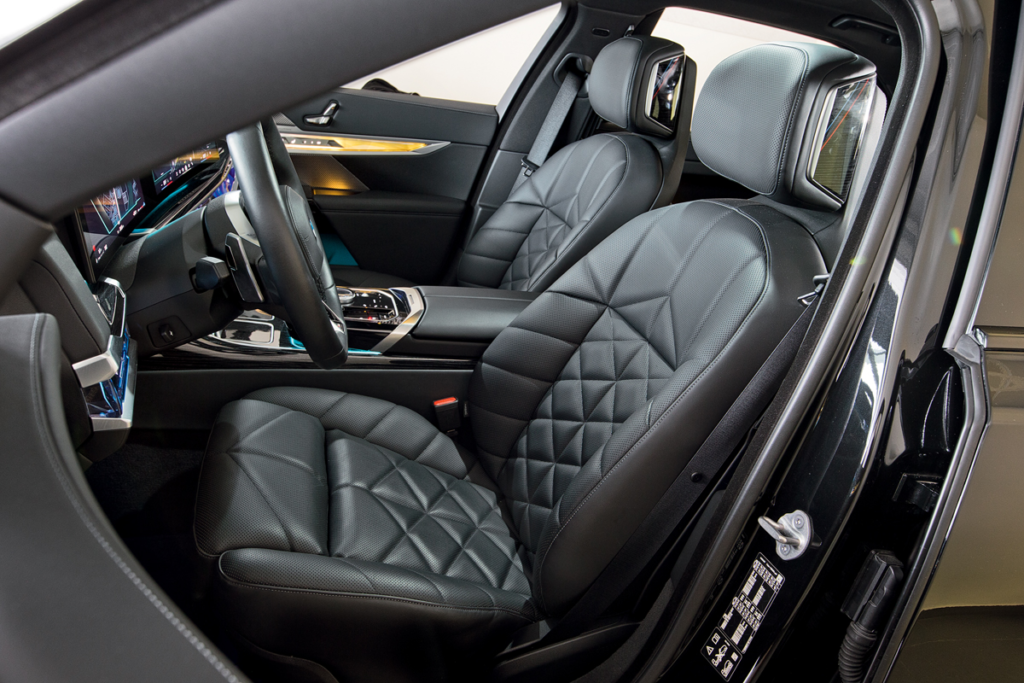
In the new seat pattern, everyone sees something different. The padding is softer than expected, and the adjustments are inconvenient. Even a temporary move of the typical Mercedes buttons to the door (how was such a decision approved at BMW?) causes a significant change in the seat position, and all the precise adjustments are hidden in the menu.
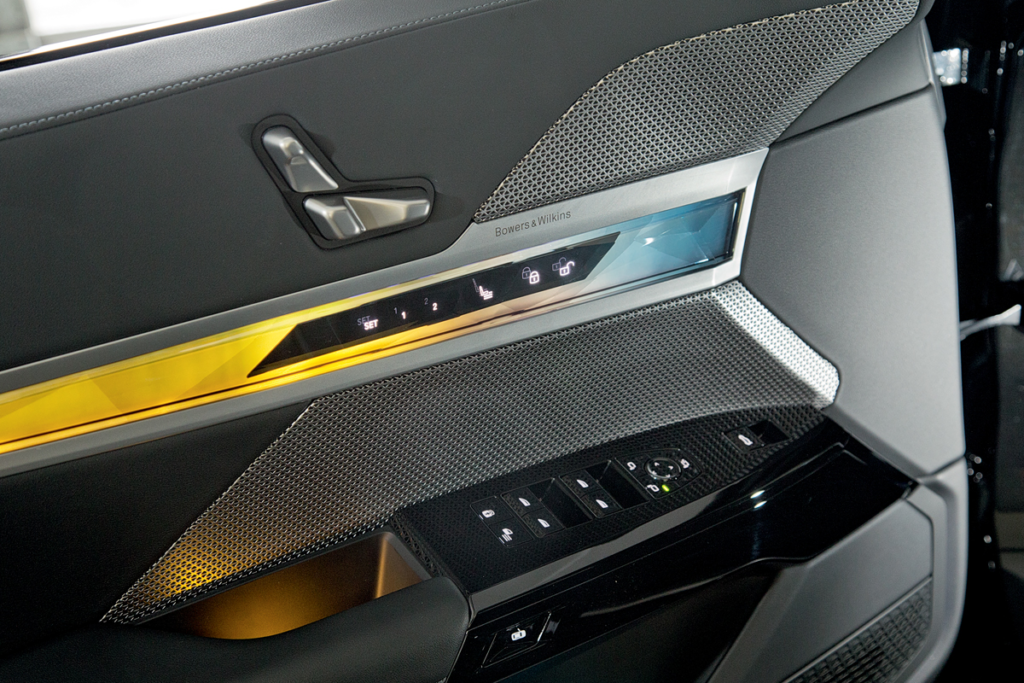
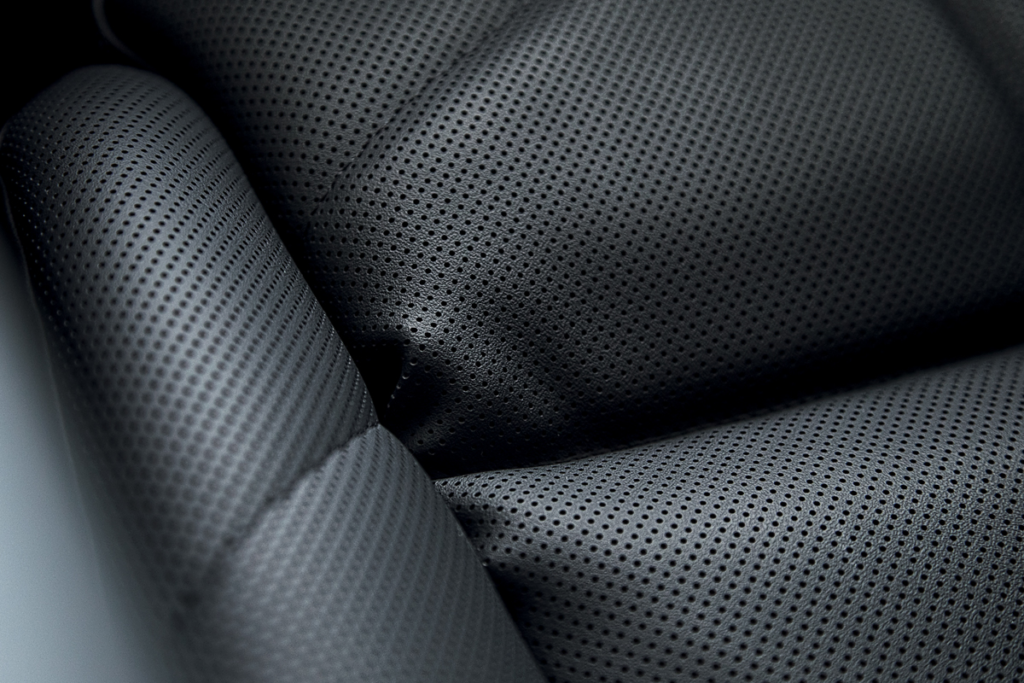
Messy folds on the cushion extender are out of place in such a car.
I distinctly remember being impressed nine years ago by the tablet integrated into the central armrest of the earlier “7 Series.” That bulky Samsung Galaxy Tab 4 served as a genuine control center for the interior: adjusting the microclimate, retracting blinds, lighting up the cabin. Now, the car features two tablets embedded within the door handle bases—an ingenious upgrade given the previous model’s lack of substantial handles, ensuring this convenient feature doesn’t go to waste. Initially, the interior felt cold and lifeless at the delivery area, perhaps even derivative—especially when noticing the all-too-familiar Mercedes seat adjustment controls on the door. However, after a thorough test drive, the G70 comes across as distinctly more contemporary, particularly when compared to the current Mercedes S-Class V223 series. This BMW truly feels like a car from the future. Although I have a fondness for the previous interior designs, the relentless evolution of design concepts, tracing back to the E32 generation, is crucial in a rapidly evolving market.

The basic rear seat has no adjustments but is quite comfortable.
Addressing the “future” often means reimagining user interfaces: nearly half of the chassis modes in “My Modes” compress the instrument display into a couple of slanted tracks. The new iDrive multimedia system, with its OS8 interface, brilliantly showcases the futuristic inner world of BMW. While the rotary dial remains, its functionality feels outdated; it rotates smoothly enough, but lateral movements are unexpectedly resistant and limited. Thankfully, the touchscreen is responsive and accurate.

A discovery by the interior designers—touch screens right on the upholstery of the rear doors. I wonder when Chinese companies will replicate this?
The menu mimics a smartphone layout with app tabs, which includes precise seat adjustments lost among a myriad of identical icons—a setup that feels as outdated as stumbling upon an old Zopo phone in a desk drawer. However, the proprietary driving modes and home screen were designed with a keen eye for detail, encouraging exploration to discover how to deactivate the stability control—not just a vehicle interface, but a piece of digital art.
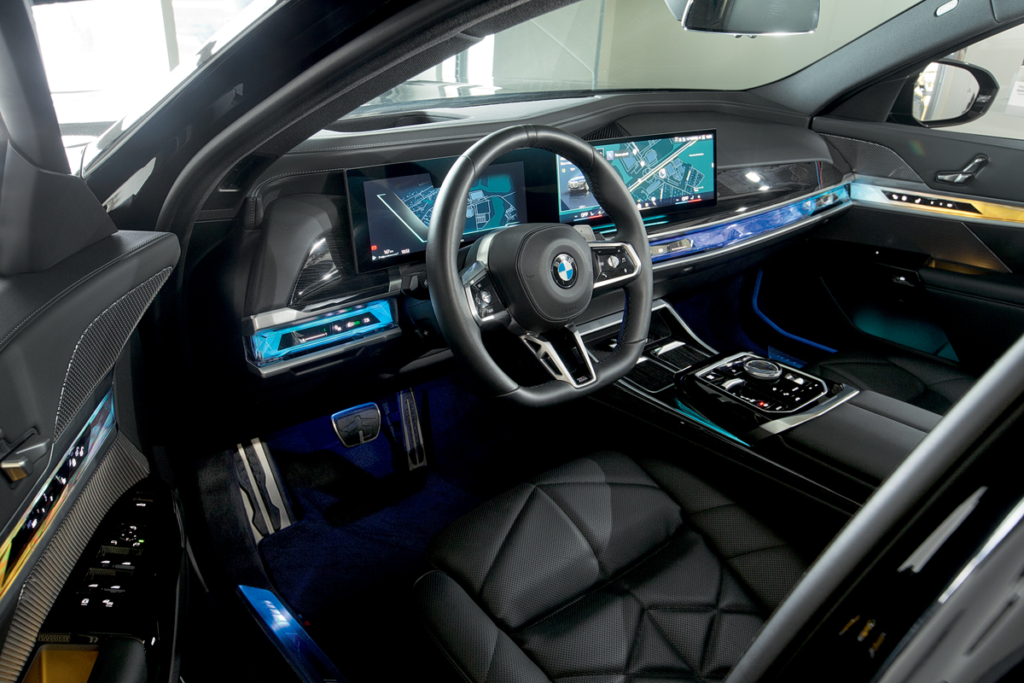
The screens do not dominate—the eye is caught by a colorful stream under a faceted shell and a new steering wheel. The usual BMW atmosphere is also created by the pedal unit with a floor-mounted accelerator.
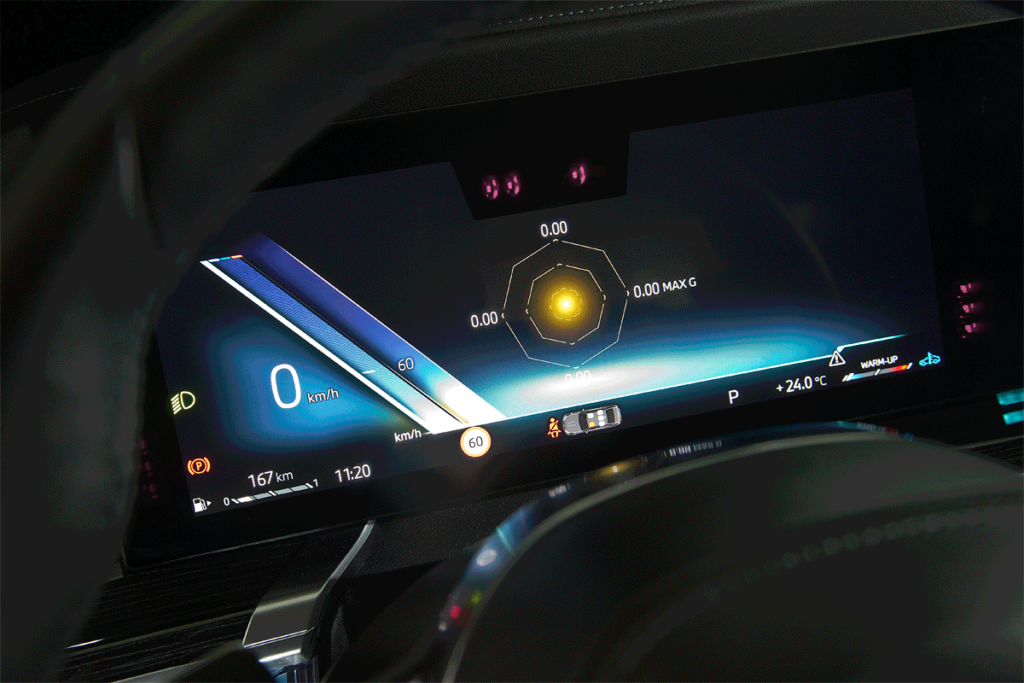
The speedometer, tucked into a corner, is surprisingly easy to read. The bottom line always displays information about the fuel reserve and the temperature of the coolant.
Indeed, the Relax, Expressive, and Digital Art settings distinguish themselves with unique graphics. Colorful abstract designs flood every screen, harmonizing with an extensive line of interior lighting that wraps around the front of the cabin—regrettably, rear passengers miss out on this visual treat. The integration of window blinds and sunroof settings completes the immersive experience. It works wonderfully: Chinese artist Cao Fei, known for her work on the BMW M6 GT3-based art car, has infused the car interiors with fresh, artistic flair. This is a sophisticated nod to the ambient nature sounds and “midsummer night dreams” often found in Asian vehicles.

The main downside of the new multimedia system is the inconvenience of full control using the rotary dial on the central tunnel. The graphics and screen resolution are reassuring after Chinese cars.
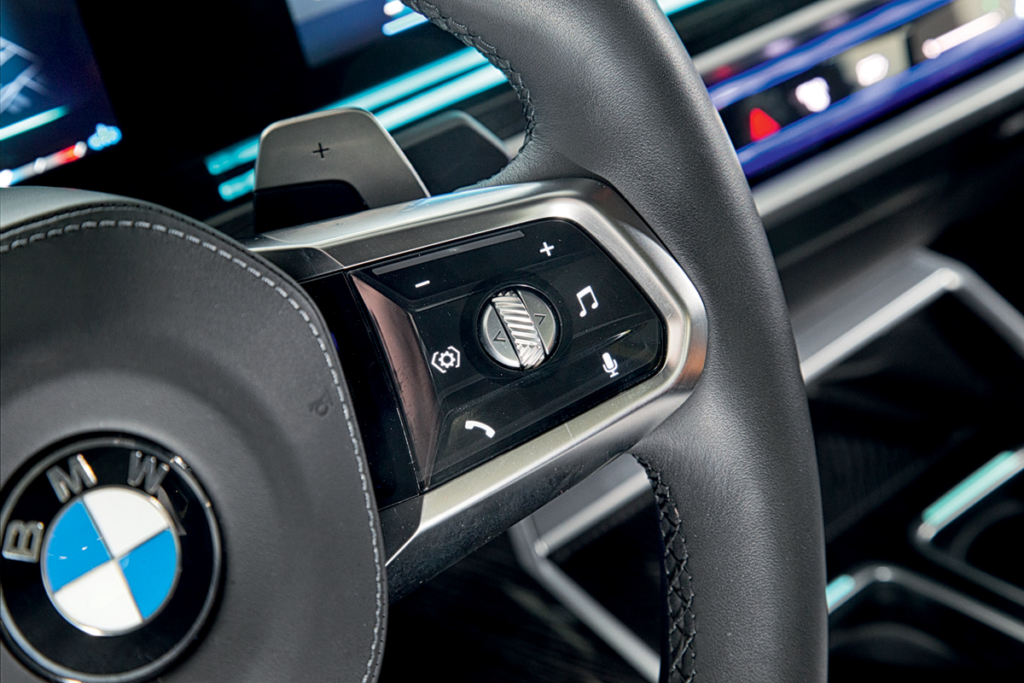
The knurled wheels not only rotate but also rock from side to side.
Yet, one pressing question remains: how on earth do you turn off the stability system?
This is crucial to confirm that despite the stylistic experiments by chief designer Domagoj Dukec and exterior designer Sebastian Simm, this remains undeniably a BMW. The brand’s hallmark, even in its largest sedans and SUVs, is to permit a bit of playful drifting. Often, the X7 manages it better than the X3, and the”7 series” navigates it more precisely than the “3 series.” If given the choice between navigating a winding winter road in a drift with the BMW 740d or the 340i, I’d opt for the seventh series without hesitation. Yes, it’s somewhat heavy, but its response to throttle inputs and its neutral handling in corners—free from the typical xDrive over-corrections—are exemplary. The refined glow from the barriers reflecting off the massive chrome nostrils truly complements its sophisticated stance.
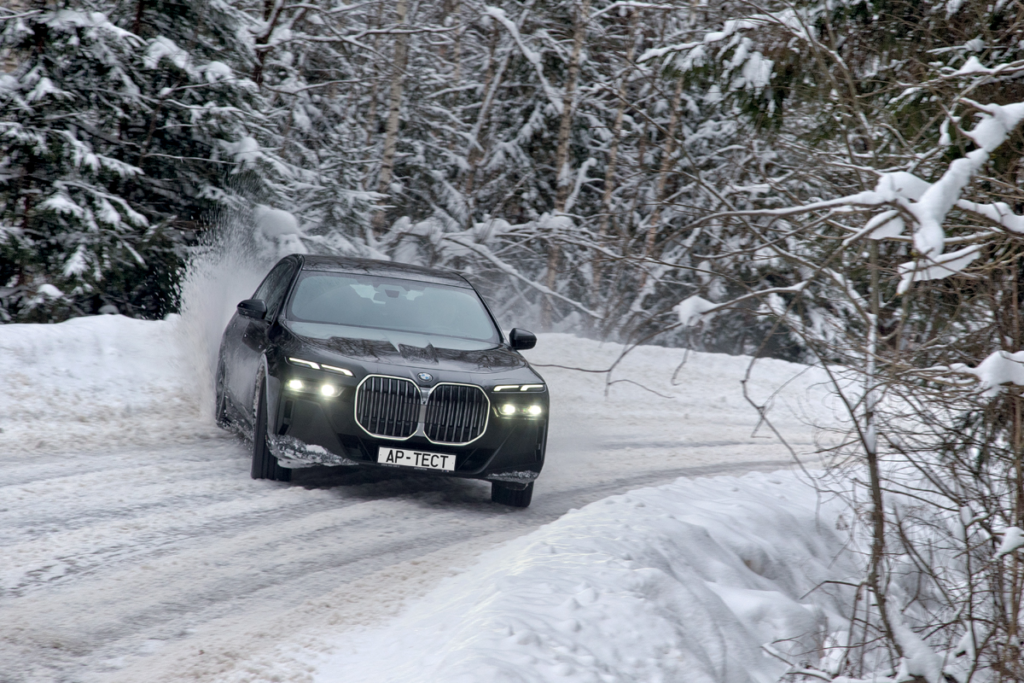
In essence, the BMW 740d redefines expectations, bringing together luxury and dynamic performance to offer a compelling driving experience. Its blend of advanced technology, comfort, and iconic BMW driving pleasure makes it not just a vehicle, but a statement on wheels, adeptly navigating the line between heritage and innovation.

The chassis has been updated selectively. The front double wishbone and rear multi-link suspension are retained. Air springs can raise the body by 20 mm, bringing the ground clearance to almost 200 mm. The stiffness of the front subframe is increased, and the rear now has hydro-bearings for improved comfort. The motors of the active stabilizers are now powered by a 48-volt electrical system (its components are painted orange).
The driving experience of the BMW 740d truly surpasses expectations. Even the base diesel engine provides commendable dynamics up to 150 km/h. In our tests, the car accelerated to 100 km/h in 6.2 seconds, slightly off the promised 5.8 seconds. Remarkably, the engine revs up to an atypical 5600 rpm for a diesel, performing effortlessly, as if it still had reserves of power. The eight-speed automatic transmission performs flawlessly, and importantly, unlike the “3 series” with a similar powertrain, the “7 series” allows for a smooth stop at traffic lights. The brake pedal, equipped with electric assist, isn’t particularly communicative but its long travel prevents missteps at low speeds. Moreover, I never had issues with the mandatory start-stop system—it’s seamless.
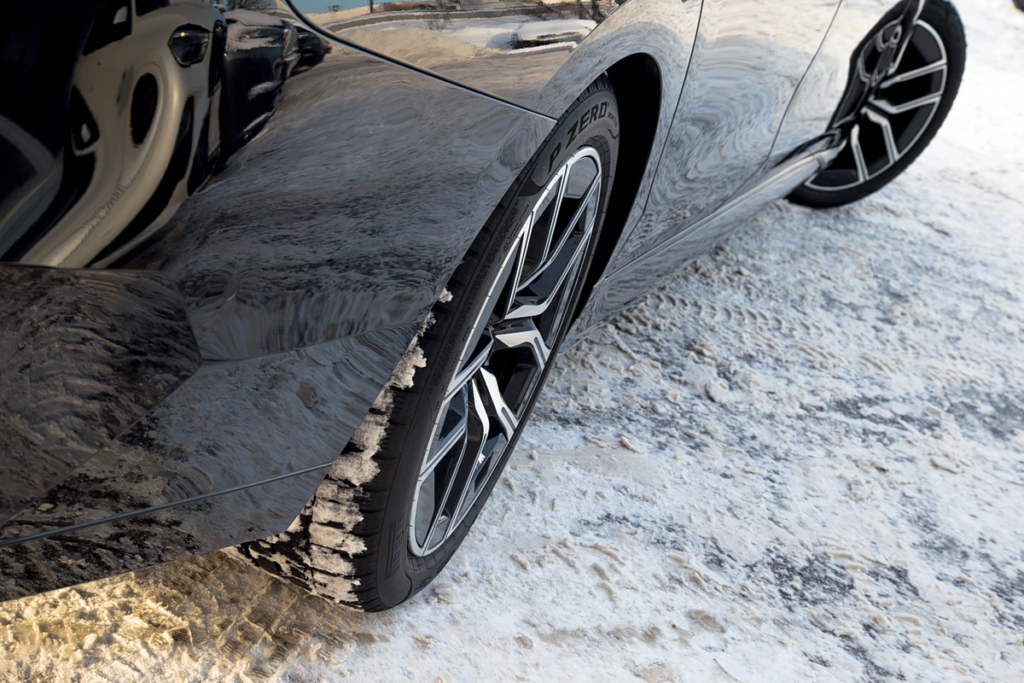
A turning angle of 3.5 degrees for the rear wheels is modest by current standards. But it’s enough to reduce the turning diameter by 0.8 m.
The CLAR platform remains, preserving the layout and main elements of the suspension. The front double-wishbone and rear five-link can still be enhanced with active stabilizers, and all-wheel steering is now standard across all seventh series sedans—likely a compensation for removing carbon fiber from the materials list. Those Carbon Core badges on the central pillar of the previous “7 series”? They’re now obsolete, with no composite materials in the body structure. Additionally, Munich hasn’t followed Mercedes in terms of “joint” flexibility; the maximum deviation angle of the rear wheels is only 3.5 degrees compared to 10 degrees in the S-class. In practical terms, this proves sufficient, and maneuverability issues are non-existent.

The transmission joystick has degraded into a barely noticeable protrusion. The large media control dial fits well in the hand, but the effort for side movements is too high.
Initially, I was impressed by the handling. Though I desired sharper responsiveness, the steering reactions vividly reminded me of the previous “7 series,” which led its class in agility. However, what is pleasing in slower modes becomes a liability at higher speeds. Could travelling under 170 km/h really be considered excessive for a modern executive car? At these velocities, the connection with the sedan weakens, lane changes tense up, passengers grow quiet, and palms sweat. This sensation might be attributed to winter tires, and I anticipate the “7 series” will handle distinctly better on summer roads.
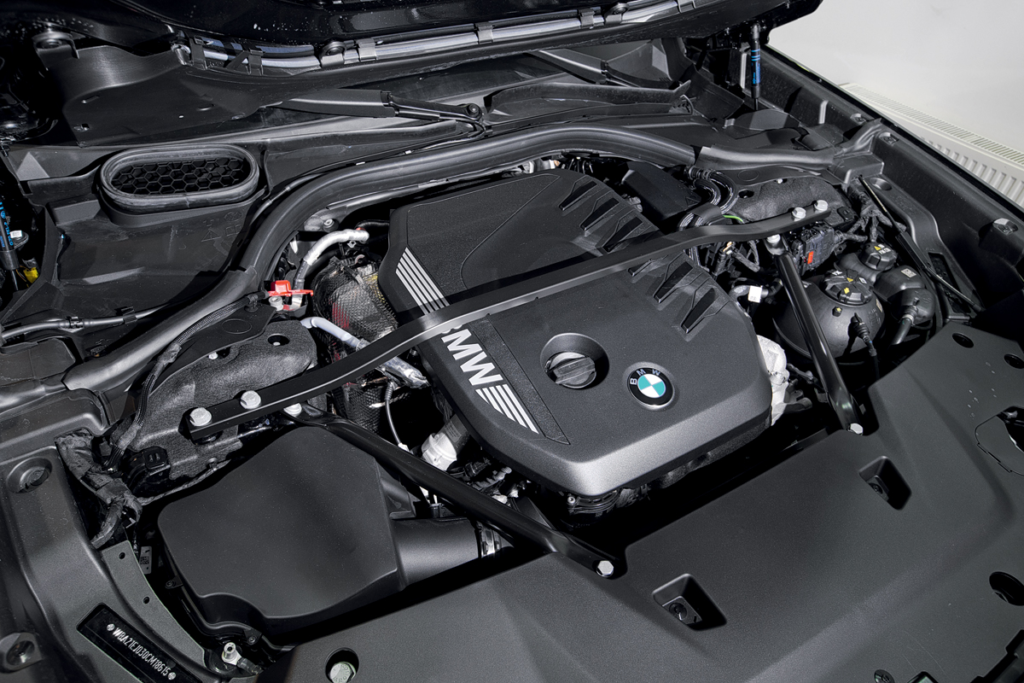
The B57 diesel has been significantly upgraded: steel pistons instead of aluminum, new fuel injectors with injection pressure up to 2500 bar. The 48-volt starter-generator, providing a quick start from a standstill, helps eliminate the typical modern diesel lag when pressing the gas pedal.
Or perhaps the car is indeed too swift? Beyond 150 km/h, the engine unexpectedly loses steam, and acceleration feels lethargic. Moments before, you were piloting a state-of-the-art vehicle with a robust diesel engine, and now even hatchbacks with smaller turbo engines are overtaking you. However, comparing the dynamics of the BMW 740d and Mercedes S 350 d, the latter consistently falls behind. I am intrigued to test the more potent gasoline versions, burdened with a hybrid system, or the electric i7 sedan, which is externally distinguished by only minor details.
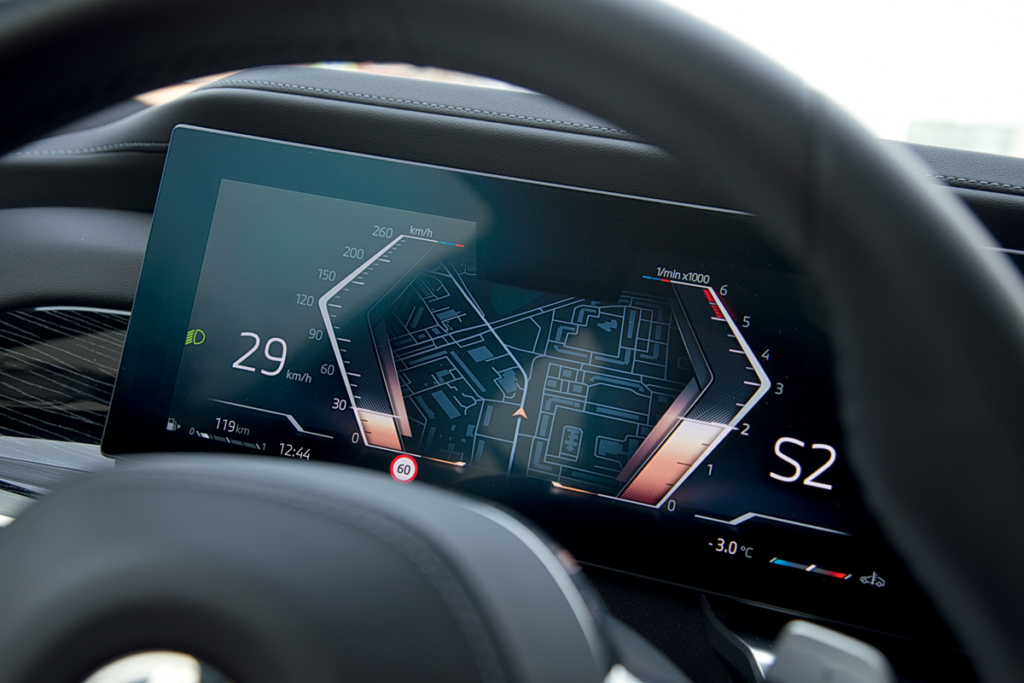
The standard instrument screen (first slide), and the second slide—a real-time video broadcast with activated autopilot. Not only can you keep your hands off the wheel for a short time (BMW drives perfectly even with noticeable snow marking), but you can also look not through the windshield but at the screen.
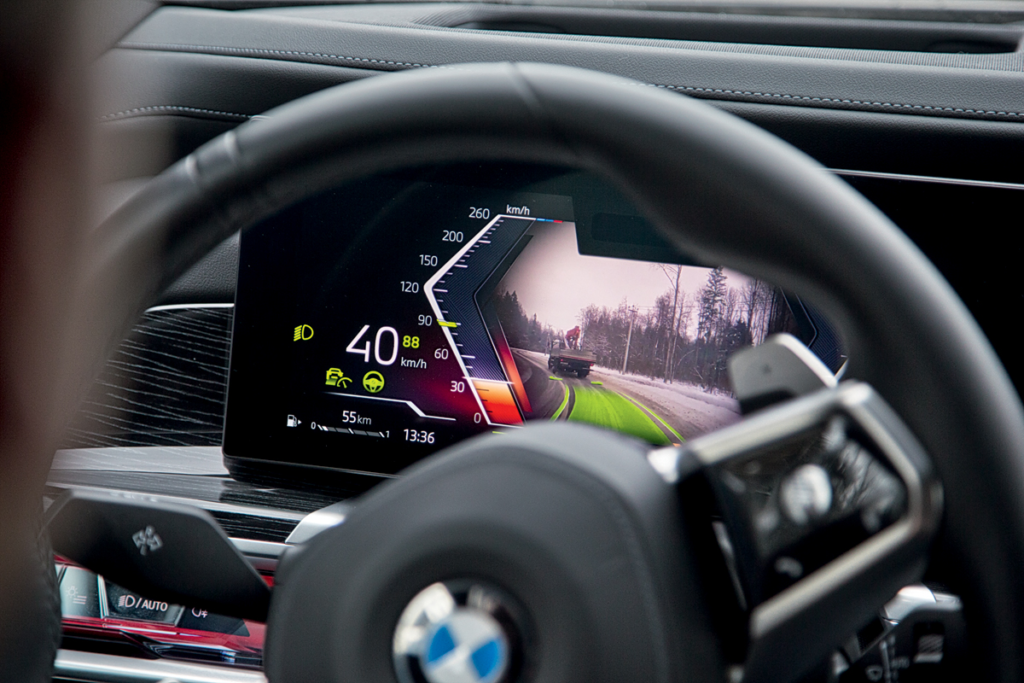
Is it quieter, though? This “7 series” has single but thick windows which, in my opinion, inadequately shield the cabin from external noises. The engine noise is minimal, even at full throttle, and any slight vibration at idle is only perceivable through the steering wheel, disappearing once the unalterable start-stop system kicks in. Yet, wind and passing trucks remain audible—there’s a lack of the S-class’s enveloping quiet.

If your BMW still has a round light control knob, give it a farewell twist. From now on, it will be so—with buttons and sensors.
On another note, experiencing the “torn trampoline” effect is uniquely enjoyable: you’re lifted upwards smoothly but then jolted harshly upon landing. Adaptive dampers and air springs offer a limited choice between comfort and sport modes. According to the press release, the Relax and Digital Art settings also influence suspension behavior, but Yaroslav Tsyplyonkov and I struggled to differentiate this from the comfort setup. We mostly drove in Comfort, where the large sedan rides unexpectedly roughly, reacting petulantly to minor imperfections on an otherwise smooth road. I seek dignity in my drive, and in Comfort, I prefer to feel as though I’m levitating. The brief hovering phase when the G70 rides a wave is delightful, but why must the body halt so abruptly on landing? The disparity in ride smoothness relative to the road’s appearance is puzzling. Oddly, both driving and acoustic comfort are noticeably superior in the front compared to the rear.
How could this be? Hadn’t they mastered these technologies nearly a decade ago, changed damper suppliers, and refined the adaptive algorithms? Indeed, the harsh jolts and knocks remembered from the previous “7 series” F01 are absent, yet the noticeable bumps on medium undulations are disheartening. I recall no such discomfort with the Mercedes S-class, even after extensive driving on varied road conditions during a two-year-old rating test. And we haven’t even challenged the “7 series” on Moscow’s Third Transport Ring’s harsher joints and obstacles. What will the experience be like with the M-Adaptive suspension? I suspect it might not be pleasant.
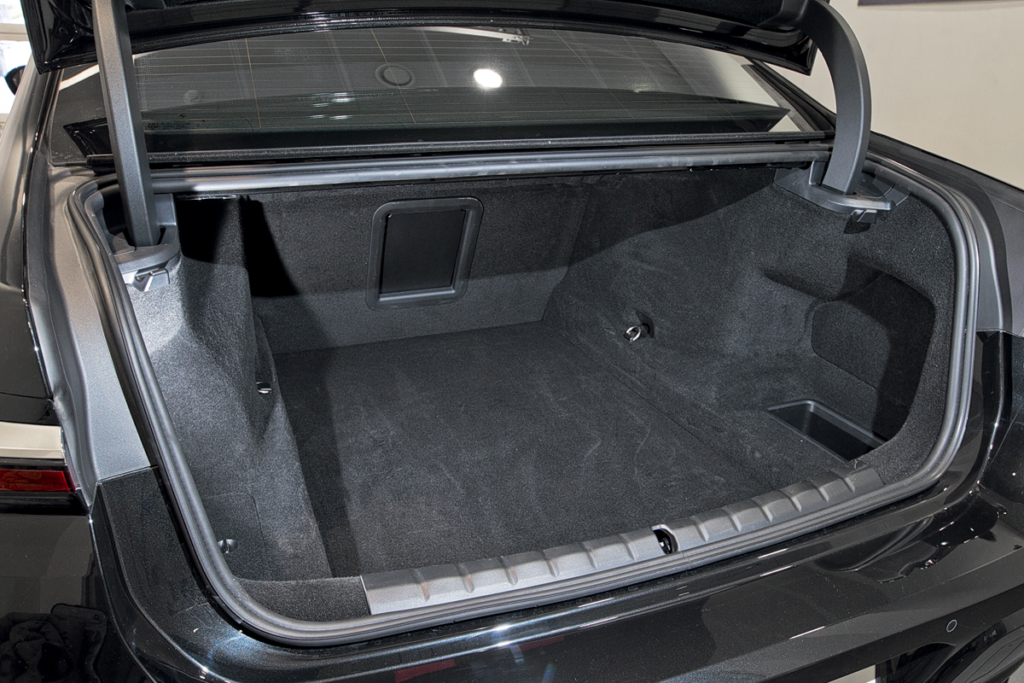
The dimensions of the wheel arches have become larger, as has the loading height. The trunk volume (passport 540 L) and the quality of the finish remain at the previous level.
Perhaps I’ve drafted sufficient critique for the new “7 series,” isolated in frosty Zikra. It’s astonishing how rapidly automotive standards, once deemed unassailable, have declined. High-end German models, now costing double or even triple their former prices, are nearly redundant, while previous owners now opt for previously obscure Chinese brands. Yet, despite its flaws, the BMW G70 “7 series” remains superior to any Chinese car I’ve driven.
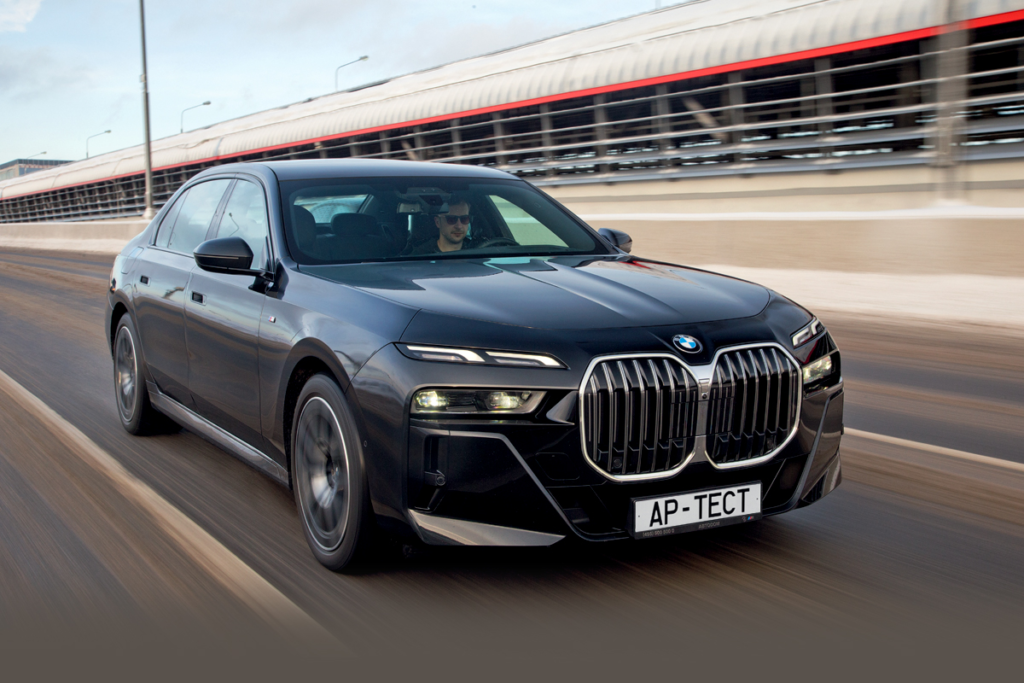
For those concerned that German engineering is a relic of the past, rest assured. The G70, developed over five tumultuous years marked by COVID-19 halts, the rise of Chinese market influence, and significant shifts in the global market, stands as a testament to enduring quality. It bridges the familiarBMW past and an as-yet-undiscovered future. For example, while Mercedes S-class sales dropped by 18% last year, this presents an opportunity for the “7 series” to gain popularity. Yet, it also signals that local manufacturers are making significant inroads in China, the largest market for these companies. In my view, the G70 has adapted quite well to these new market dynamics. Thankfully, the stability system still disengages, allowing this sleek predator to glide beautifully across the road.

This is the first BMW 7 series with a license plate on the bumper, not on the trunk lid. The upper edge of the lid itself is also noticeably higher than before.
Whether you’re a long-time BMW enthusiast or exploring options in the high-end sedan market, the G70 offers a compelling blend of traditional BMW performance with forward-looking innovations. It’s more than just a car; it’s a statement of where BMW envisions the future of luxury driving, making it a fascinating model for both driving purists and technology aficionados alike.
| Category | Specification |
|---|---|
| Automobile | BMW 740d xDrive |
| Body Type | Four-door sedan |
| Dimensions (mm) | Length: 5391 Width: 1950 Height: 1544 Wheelbase: 3215 Track front/rear: 1662 / 1684 |
| Curb Weight (kg) | 2180 |
| Gross Weight (kg) | 2895 |
| Trunk Volume (L) | 540 |
| Engine Type | Diesel, with battery injection and bi-turbocharging |
| Engine Placement | Front, longitudinal |
| Cylinder Configuration | 6 cylinders, in-line |
| Displacement (cm³) | 2993 |
| Maximum Power | 286 hp / 210 kW at 4000 rpm |
| Maximum Torque | 650 Nm at 1500—2500 rpm |
| Starter-Generator Power | 18 hp / 13 kW |
| Starter-Generator Torque | 200 Nm |
| Peak Power of Powertrain | 299 hp / 220 kW |
| Peak Torque of Powertrain | 670 Nm |
| Transmission | Automatic, 8-speed |
| Drive Type | All-wheel drive, with multi-disc clutch in front axle drive |
| Front Suspension | Independent, pneumatic, on double transverse arms |
| Rear Suspension | Independent, pneumatic, multi-link |
| Tire Dimensions | 245/50 R19 |
| Maximum Speed (km/h) | 250 |
| Acceleration 0—100 km/h (s) | 5.8 |
| Fuel Consumption (L/100 km) | Mixed |
| Cycle | 6.8 |
| Fuel Tank Capacity (L) | 74 |
| Fuel Type | Diesel |
Photo: Dmitry Pitersky | BMW company
Expert group: Yaroslav Tsyplenkov
This is a translation. You ca read the original article here: Тест нового седана BMW 740d поколения G70: жив ли немецкий инжиниринг?

Published August 22, 2024 • 16m to read


